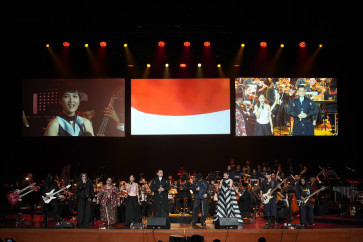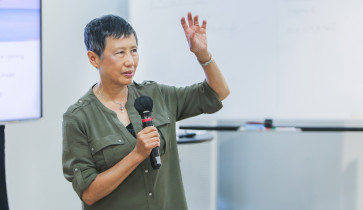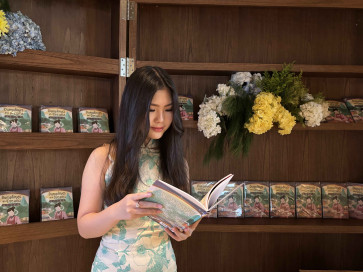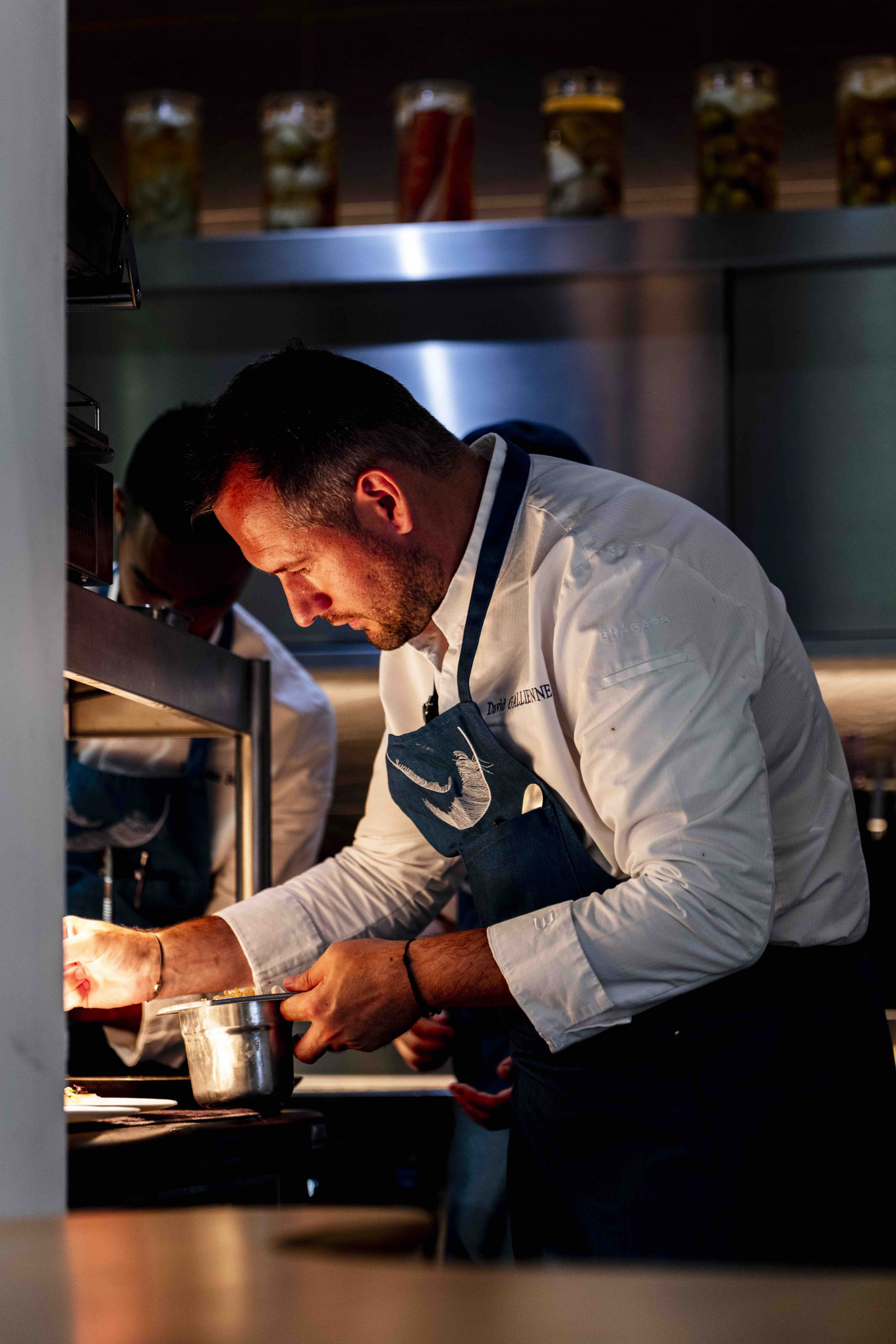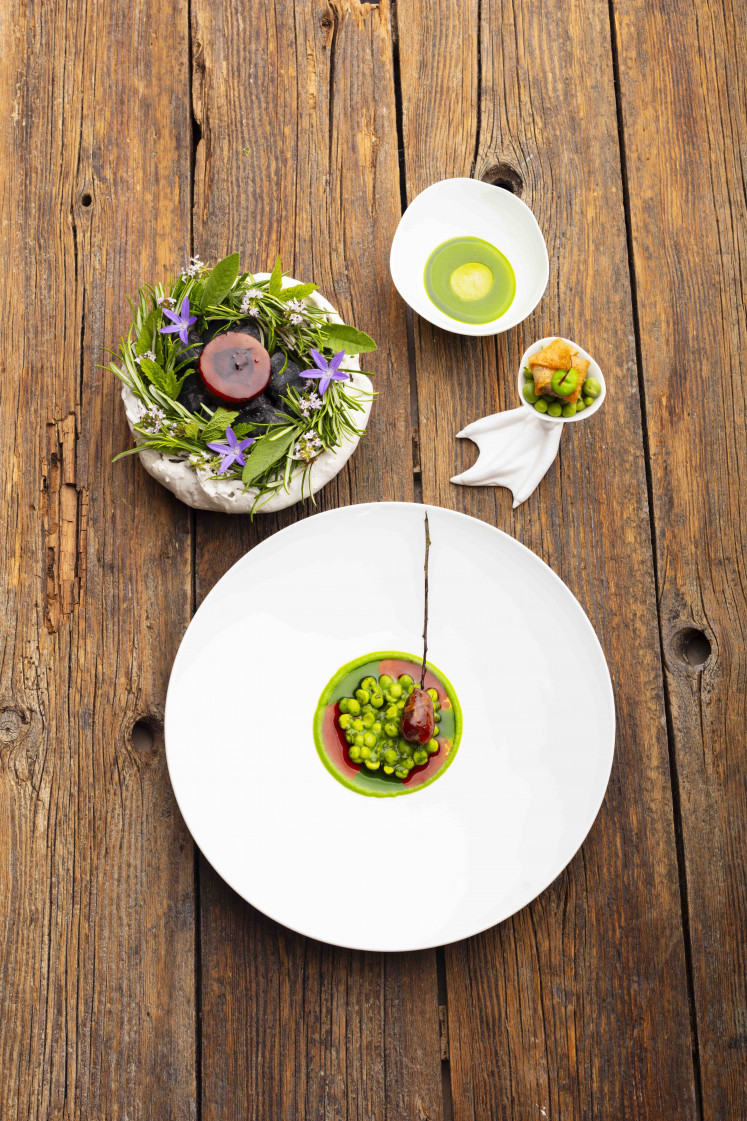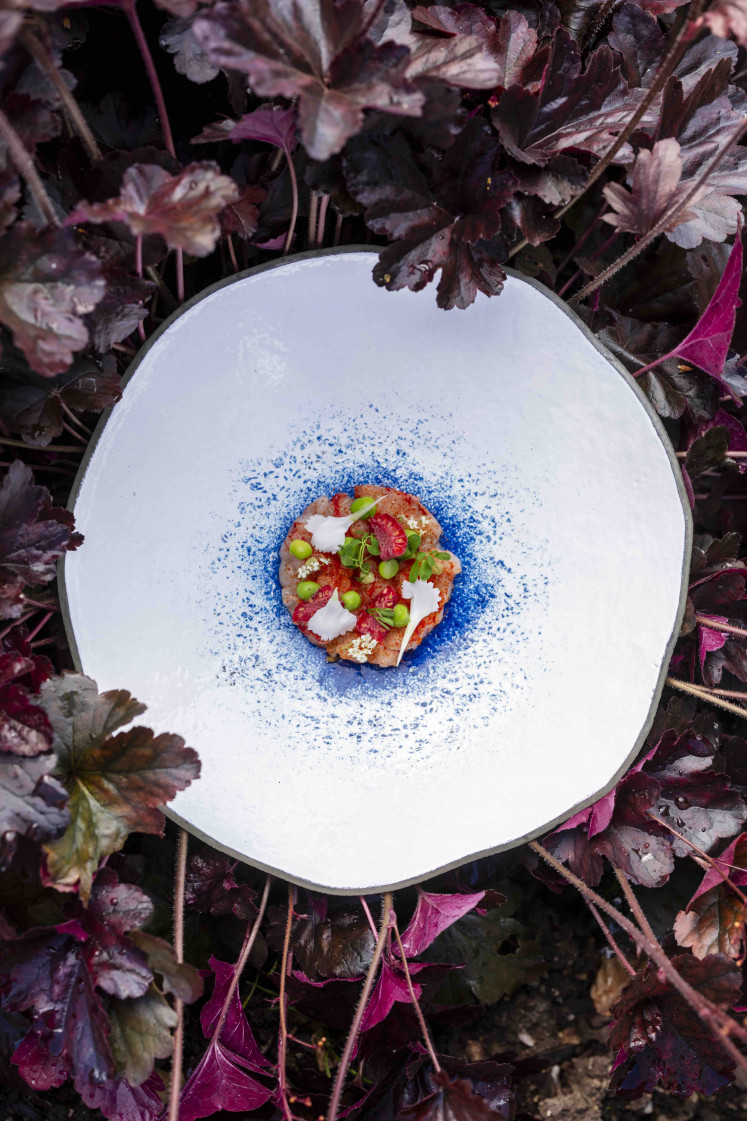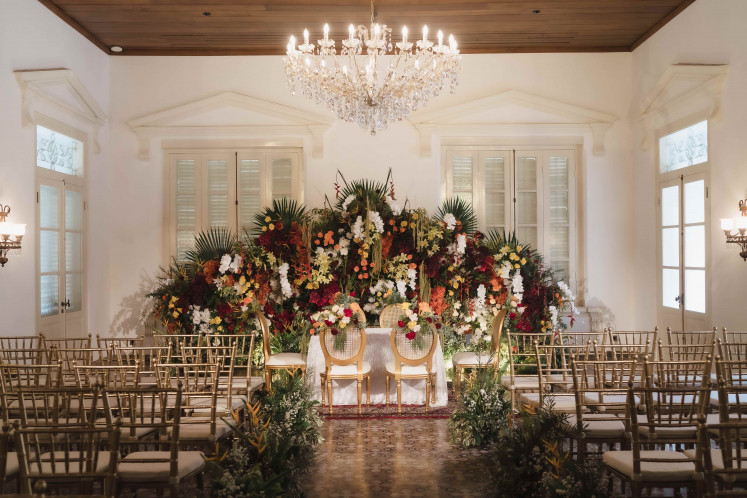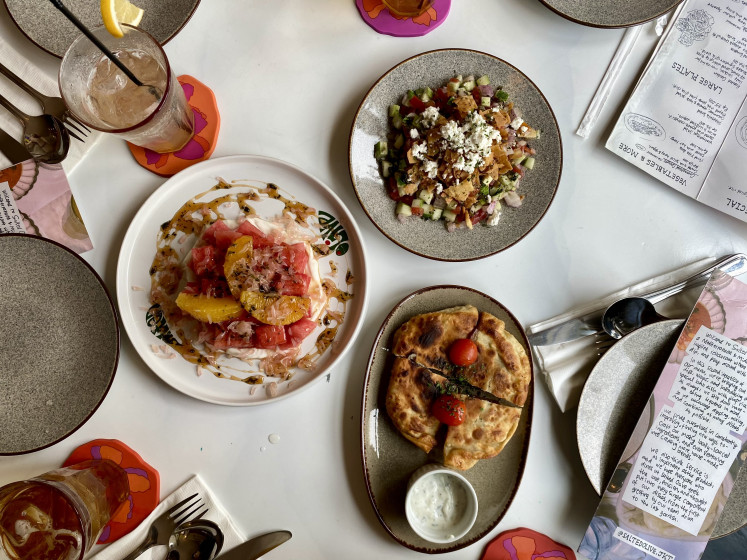Kitchen magic: With intense focus and precision, David Galliene prepares each dish to perfection, creating an unforgettable culinary experience.
French cuisine is celebrated for its elegance, precision and premium ingredients. Indonesian food, on the other hand, is bold, flavorful and dynamic.
So what happens when these two worlds collide?
Marrying France’s refined techniques with Indonesia’s vibrant spices opens up a whole new world of culinary possibilities.
This was the focus of the Le Goût de France program, an initiative by the French Embassy and the Institut Français d'Indonésie. The cross-cultural exchange aimed to explore the potential of this fusion, bringing Michelin-starred chef David Gallienne to Indonesia for the first time.
During a ten-day program from Sept. 30 to Oct. 10, 2024, Gallienne collaborated with local chefs to merge traditional Indonesian flavors with French culinary techniques, pushing boundaries and sparking fresh creativity.
Best of both worlds

Thank you!
For signing up to our newsletter.
Please check your email for your newsletter subscription.
Gallienne, the Season 11 winner of “Top Chef France” and the talent behind the acclaimed restaurant Le Jardin des Plumes, is known for blending classic French methods with modern flair.
During his visit to Indonesia, he was particularly impressed with rendang, the iconic slow-cooked Indonesian beef dish steeped in coconut milk and spices. He likened it to boeuf bourguignon, a French classic of beef braised in red wine and slow-cooked for hours to develop rich, layered flavors.
“In French cuisine, slow cooking is revered for transforming simple ingredients into rich, comforting meals. Similarly, Indonesian cuisine celebrates the slow cooking of spices and meats to achieve deep, complex flavors. This shared respect for time-honored techniques became a focal point for culinary innovation,” he said.
Tasteful aesthetics: An artfully plated French dish that combines fresh ingredients with distinctive flavors showcases the simplicity and elegance of French cuisine. (Courtesy of Institut Français Indonesia)
But it's not just about French chefs adapting to Indonesian flavors.
Indonesian spices like galangal, a staple in local kitchens, are rarely used in French cuisine. Introducing these ingredients into French dishes opens up new possibilities.
Gallienne experimented with galangal in escabeche mackerel, a dish traditionally made with a tangy vinegar-based marinade. The result? A unique blend of bold Indonesian flavors with the precision of French technique.
This approach embodies the spirit of the program: creating something new by reimagining culinary traditions.
Culinary fusion
The influence of French cuisine in Indonesia has been steadily growing, with French-inspired restaurants, bakeries and bistros becoming more common in cities like Jakarta.
What makes French cuisine so appealing in Indonesia?
Part of the answer lies in its balance of technique with innovation. French chefs are known for their attention to detail and elegant presentations, whether it’s in a casually elegant and accessible bistro or for the all-encompassing experience of haute cuisine.
Now, high-end restaurants in Indonesia are incorporating French techniques into dishes infused with bold local flavors, creating a sophisticated fusion that elevates both culinary traditions. The rich and diverse Indonesian ingredients, when paired with the subtlety of French methods, create dishes with layers of complexity.
Attention to detail: With its colorful and detailed presentation, this dish reflects the harmony of French technique and creative innovation. ( (Courtesy of Institut Français Indonesia)
But creating a perfect dish means going outside the kitchen.
Gallienne encourages young chefs to embrace the culinary exchanges made possible by social media and other digital platforms, and to showcase their own unique culinary heritage.
"Cooking is not just about following recipes; it's about expressing who you are. So dare to experiment and bring your unique flavor to the table. That's what makes a dish truly exceptional."
As French cuisine continues to influence Indonesia’s food culture, Indonesian flavors are also beginning to leave their mark on French culinary traditions. This burgeoning relationship is still in its early stages, promising exciting new flavors waiting to be discovered.
After all, food is more than just sustenance. It evolves. It is a cultural bridge that connects people, promotes cooperation and fosters mutual appreciation.
So, the next time you sit down to enjoy a classic French dish like escargot or a comforting bowl of nasi goreng, don't be surprised if you detect a hint of one culture enriching the other.
Kevinia Ruth Natasya is an intern for The Jakarta Post's Creative Desk. Passionate about storytelling, she's a matcha enthusiast and adventurous soul who believes that “every challenge is an opportunity to grow stronger and wiser”.




